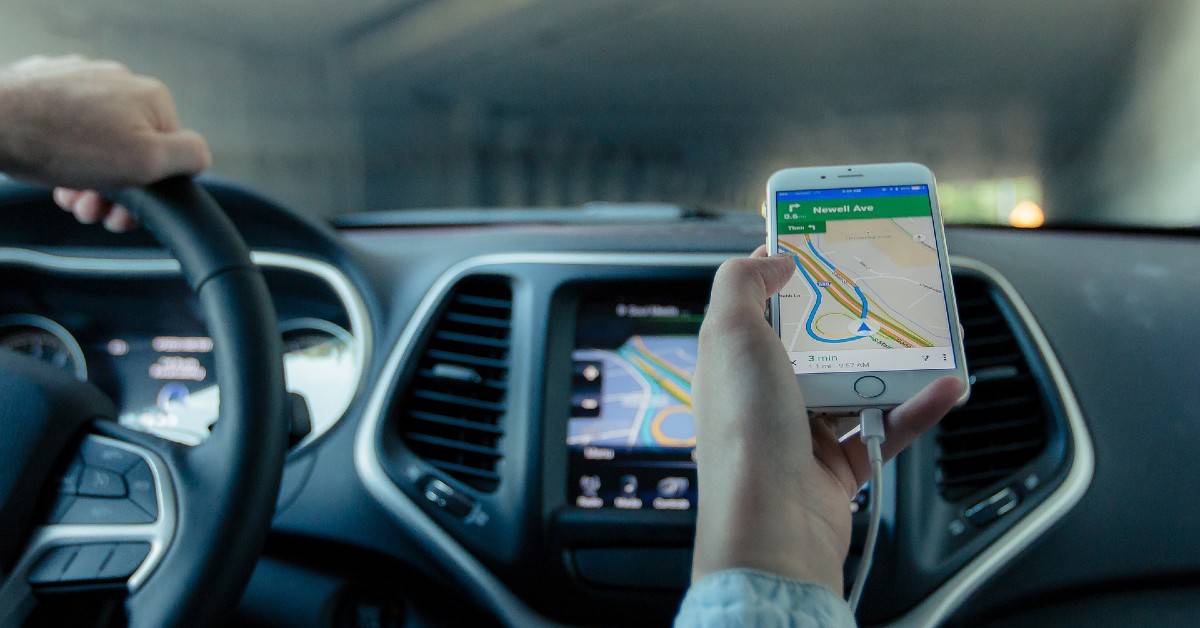How Does GPS in Cars Work Without the Internet?

GPS has become a cornerstone of modern technological life. Almost all devices have some form of GPS inside them, which allows you to determine their location or share yours with someone you want to. GPS systems are usually connected to the Internet, wherefrom they draw the necessary information, but there is one specific GPS system that works offline because it is a fully self-contained system that already has all the necessary information and that is – a car GPS.
GPS in cars works without the internet because it is a self-contained system that has all the needed data already pre-installed in it.
Below, we will explain the system of GPS in cars, how exactly does it work, and what are the components of the car navigation system. Before you dive into reading, visit 14CARS.com to check SUVs available for rent and get one for yournext trip.
What Is a Car GPS?
A car GPS or an automotive navigation system is part of the automobile controls or a third-party add-on used to find direction in an automobile. It typically uses a satellite navigation device to get its position data which is then correlated to a position on a road. When directions are needed routing can be calculated. On the fly traffic, information can be used to adjust the route.
Dead reckoning using distance data from sensors attached to the drivetrain, a gyroscope, and an accelerometer can be used for greater reliability, as GPS signal loss and/or multipath can occur due to urban canyons or tunnels.
Mathematically, automotive navigation is based on the shortest path problem, within graph theory, which examines how to identify the path that best meets some criteria (shortest, cheapest, fastest, etc.) between two points in a large network. The whole concept started off in 1961 with a very primitive navigation system intended for military use, created by Japanese scientist Hidetsugu Yagi. Since then, the GPS system for vehicles has been in constant development.
Automotive navigation systems are a crucial for the development of self-driving cars.
As far as the technology is concerned, the road database in automotive navigational systems is actually a vector map. Street names or numbers and house numbers, as well as points of interest (waypoints), are encoded as geographic coordinates. This enables users to find the desired destination by street address or geographic coordinates.
Map database formats are almost uniformly proprietary, with no industry standards for satellite navigation maps, although some companies are trying to address this with SDAL and Navigation Data Standard (NDS).
Map data vendors such as Tele Atlas and Navteq create the base map in a GDF (Geographic Data Files) format, but each electronics manufacturer compiles it in an optimized, usually proprietary manner. GDF is not a CD standard for car navigation systems.
GDF is used and converted onto the CD-ROM in the internal format of the navigation system. CDF (CARiN Database Format) is a proprietary navigation map format created by Philips.
SDAL is a proprietary map format developed by Navteq, which was released royalty-free in the hope that it would become an industry standard for digital navigation maps, has not been very widely adopted by the industry.
Why GPS in Cars Doesn’t Need the Internet?
As we’ve said, a car GPS does not need access to the Internet because it is a self-contained system that has all the necessary data pre-installed in it. What we actually call a GPS (in cars) is actually a very complex system and GPS is only a small part of it.
Although GPS has become the colloquial term for the whole system, it is actually not a completely precise name, as the system is far more complex than most people imagine. We’ll briefly explain how it functions in the following paragraphs.
So, the so called in-car GPS is actually a complete navigation system, with three major components:
- A GPS receiver – the GPS is a receive-only system; we cannot transmit data or messages via GPS. A GPS receiver performs one and only one very simple function – it listens to GPS satellite signals and calculates its position relative to the surface of the Earth, in the form of latitude and longitude. It is used only for positioning.
- An elaborate map – typically, when you buy a car, its navigation system will come loaded with a detailed map of that country (even some others), i.e. a database of every road and landmark in the entire country, and associated latitude and longitude coordinates. Sometimes, in smaller countries, it will also contain a map of neighboring countries, as we’ve already said. There is no actual rule here; the maps can be smaller or larger (they can even encompass whole continents), but they can also be enlarged and updated, which usually requires Internet access, but that access is not related to determining the location itself.
- An internal navigation system – by using gyroscopes and accelerometers, the internal system can measure your movements and turn them into precise geographical coordinates for you to see.
Now, how do all these pieces work together? Well, when you turn on the GPS navigation system in your car, it actually doesn’t know where you are; it has a map, but it doesn’t know where you are. The initial position is provided by the GPS receiver, and for the most part, this is really all that the GPS contributes to determining the location of your car.
Once you have a position fix, it is matched against the map to determine exactly where one is situated. Once this is finished and the drive commences, the third element (the internal navigation) comes into the spotlight.
The system knows how many millimeters or kilometers we have moved, in which direction, where did we turn, etc., and thus it knows – at any given moment – exactly where we are located and where we are headed.
Can You Track a Car Using Its Internal GPS?
This is certainly possible, but it depends on whether your car GPS is active or not. Although you probably won’t use GPS to find your car when you forget where you’ve parked it, it’s still useful to know that you can track it in case something bad happens or your car is stolen (a good thief will, sadly, probably turn off your car’s GPS, but you might be lucky in such a situation). So, let us see the two situations.
The process is relatively simple if you have an active GPS. The tracker will use the gathered information on the movement and the location of the car, send it back to you and you will be able to find it quickly and precisely.
In case your car GPS is not active in any moment, the process becomes a lot harder, but not impossible to do. In the case of a passive system, you will have to physically remove the device from the vehicle and externally analyze the travel route; such a method is good for determining a car’s travel history, but not for determining its current location. Cars with better security systems will provide more safety even in such cases.
Can You Add a GPS to Your Car?
Yes, you can. It’s as simple as that. If you have an older model or a new car without a preinstalled GPS, you can easily add it to your vehicle. Certainly, it will cost you more to do so, but the price is relatively fair compared to the advantages you’ll get. You have two ways of installing it – by buying a portable GPS or by having the factory/dealer install one for you.
Portable GPS systems are the most affordable of the three options, but they don’t tend to offer some of the cool features a factory system does, like ACR (Automatic Crash Response) or Vehicle Diagnostics, since it’s not a system adapted to your specific car and what’s under its hood.
Most of them are, also, pretty ugly, so if you care for aesthetics, a portable system is not an option for you. Since they’re portable, they aren’t a built-in part of the car’s dash. Portable GPS units usually stick to the windshield or dash using a suction cup, or some other similar method.
The systems are powered from the car’s lighter or power outlet, so the cord normally runs down the dash as well. Portable systems are also at high risk for theft, and they also tend to have smaller displays than factory options. However, these systems cost significantly less than a factory- or dealer-installed system. This is probably the biggest advantage it has over the other two types.
If affordability is all you care about, then a portable GPS system is the best choice for you. They are also very small and portable, which means that you can carry them around and use them in different vehicles. Now let us see the other two types.
A factory-installed navigation system means that the system is installed as original equipment on the vehicle — just like a radio, or air conditioning, or seatbelts. A lot of consumers prefer this option because it means the system fits normally into the vehicle, without changing the car’s base aesthetics. It is generally placed on the dashboard and can be controlled without any extra remote controls of add-on switches.
But these systems are far from perfect, although they might seem it. Namely, since the systems are installed at the factory, and oftentimes the maps are stored on CDs or DVDs, the maps tend to be out of date, because the system was installed a while ago. Of course, some manufacturers do send customers updated maps, but not everyone’s that lucky, really.
Another thing that causes “problems” is its cost, as factory-installed GPS systems are usually a lot more expensive than other GPS systems for the car.
As a final point, these systems usually can’t be moved from car-to-car, which means if you have two vehicles, you’ll have to spend more money for a device in the other car.
Dealer-installed navigation systems use equipment from the automaker, but installation is handled at the dealership instead of at the factory. The cost depends on the system you select and the cost of labor needed at the dealership, but generally, drivers can expect it to cost a little less than a factory-installed system, but still more than your usual portable GPS system we’ve already talked about. It has the same drawbacks as a factory-installed system, but also a few others.
Namely, because these GPS systems are not original equipment, the components may not fit as nicely into the dash as a factory system might, which can also cause a lot of practical problems. Also, while dealers will likely offer a warranty for their work, having the system installed may void other warranties on the car. It’s always a good idea to do a little research on what it would mean for your vehicle’s warranty.
This covers our analysis of the topic for today. For more information, keep following us and stay tuned for more of the same.





